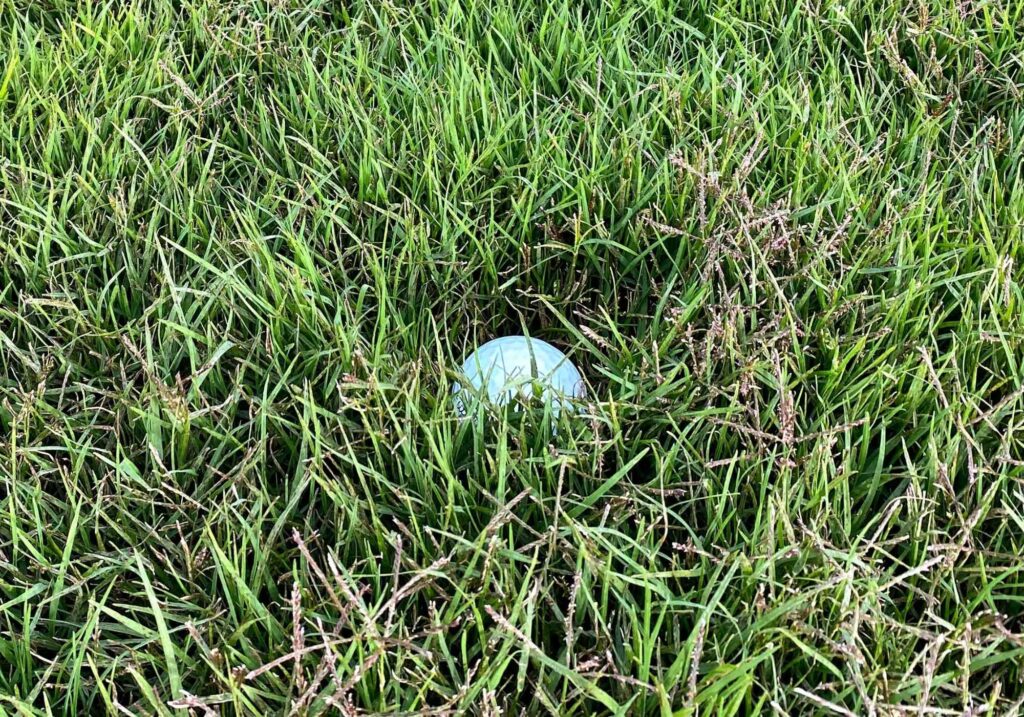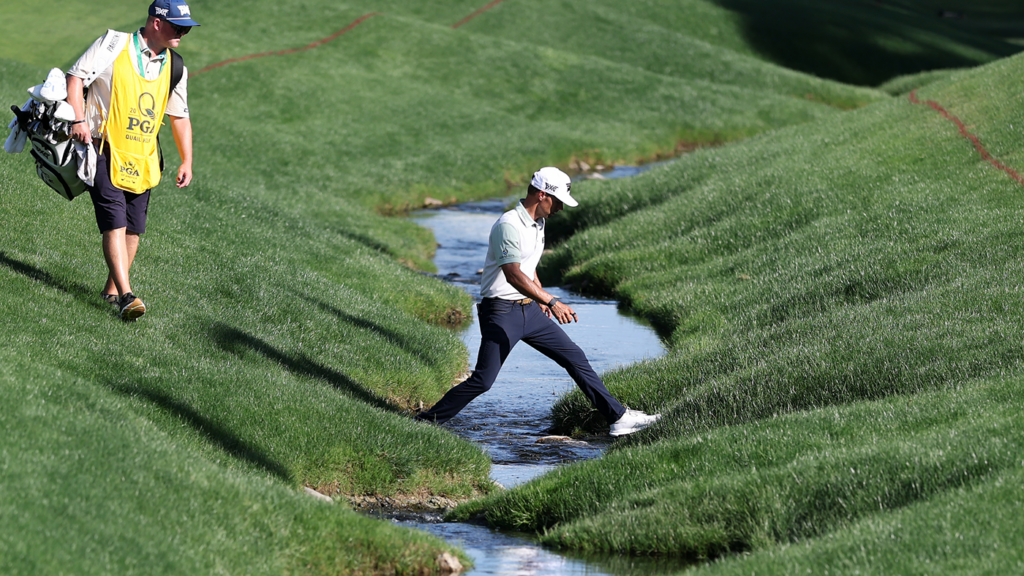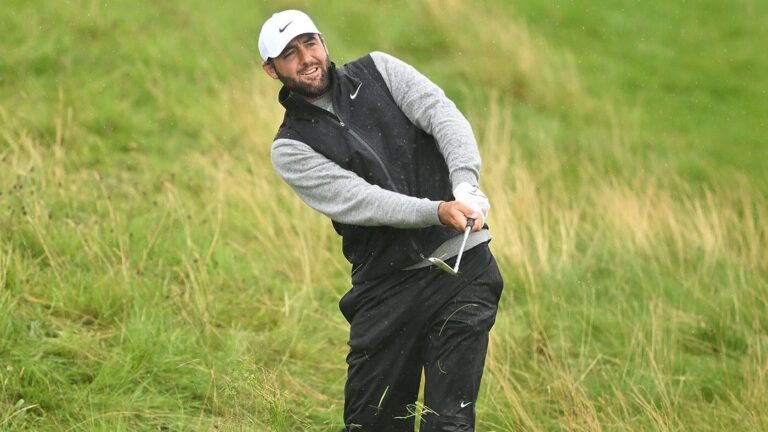Finding your ball nestled in the rough is a part of golf that even the pros deal with. It might not be ideal, but it doesn’t have to wreck your score either. Whether you’re playing from light rough or a deep, tangled mess, knowing how to read your lie and make smart adjustments can turn a tough break into a great recovery.
Here’s what to know about playing from the rough and how to give yourself the best chance at a successful shot.
Not all rough is created equal
The term “rough” is broad. It refers to any area off the fairway with longer or less maintained grass, but the actual conditions can vary widely.
Types of rough you might encounter:
- Light rough: Slightly longer grass, often just off the fairway. Usually manageable.
- Intermediate or first cut: Still playable but can grab the clubface.
- Thick or deep rough: Taller grass that can wrap around your club, slow the clubhead, and reduce spin.
- Wet or matted rough: Even more challenging. The combination of moisture and grass makes clean contact tricky.
The first key to a good shot is understanding what kind of rough you’re in.

Step one: read your lie
Before anything else, evaluate how your ball is sitting in the grass. This determines everything about your approach.
Questions to ask:
- Is the ball sitting on top of the grass or buried down?
- Is the grass growing toward the target or against it?
- How thick is the grass around the ball?
- Is the ball sitting down behind the ball or clear in front?
If you can see most of the ball, you’re in better shape. If it’s hidden or deeply nestled, your options might be more limited.
Club selection: play it smart
The rough reduces spin and control. You need to choose a club that can help you get the ball back in play and give you a clean strike—not necessarily the club you’d hit from the fairway.
General club tips:
- Use a higher-lofted club when the ball is sitting down. Wedges, short irons, or even a hybrid can help you pop it out.
- Avoid long irons or fairway woods in deep rough. They tend to snag and mis-hit more easily.
- Hybrids and utility clubs with rounded soles can cut through thick grass better than traditional long irons.
You may lose some distance, but gaining control is usually worth it.
Adjust your setup and swing
To hit from the rough, you’ll need to make some simple but crucial adjustments to give yourself the best chance at clean contact.
Here’s how:
- Grip the club a bit firmer. The grass can twist the clubface, especially in thicker lies. A firmer grip helps reduce face rotation.
- Move the ball slightly back in your stance. This promotes a steeper angle of attack, which helps you catch the ball before the grass grabs your club.
- Take a more upright swing. Avoid sweeping or shallow swings. You want to minimize the amount of grass between the clubface and the ball.
- Commit to the swing. Deceleration is your enemy. Once you’ve chosen the shot, trust it and swing through the grass confidently.
Practice these moves on the range if you have access to rough or longer turf areas.

Know when to play it safe
Sometimes the hero shot isn’t the right play. If your ball is buried or the rough is especially gnarly, your best option might be to take your medicine and punch out to the fairway.
There’s no shame in setting up your next shot instead of forcing something risky that could lead to more trouble.
Signs you should lay up:
- You can’t see most of the ball.
- Thick grass lies directly in front of the ball.
- You’re in a poor stance or on a slope.
- You’re near trees or hazards with little room to recover.
A smart decision from the rough can often save your score more than a risky attempt at glory.
What to expect on ball flight and spin
Shots from the rough behave differently, even when you strike them well.
Typical rough shot outcomes:
- The ball may fly lower and with less spin.
- Shots tend to release and roll out more when they land, especially on greens.
- Directional control is reduced if the grass grabs the hosel or heel of the club.
This is why you may need to aim for more open areas and allow for extra roll-out when hitting into greens.
Final thoughts
Hitting from the rough doesn’t have to feel like a lost cause. With a good understanding of your lie, smart club choices, and the right swing adjustments, you can make solid contact and keep your round on track.
The rough tests your creativity and discipline. Sometimes it’s about escaping cleanly. Other times, you can pull off something impressive. Either way, the key is reading the situation well and committing to the best possible shot.
Let’s hear from you!
What’s your go-to club when you find yourself in the rough? Have you ever pulled off a great save from deep grass? Share your tips, stories, or rough-weather recoveries in the comments below.
